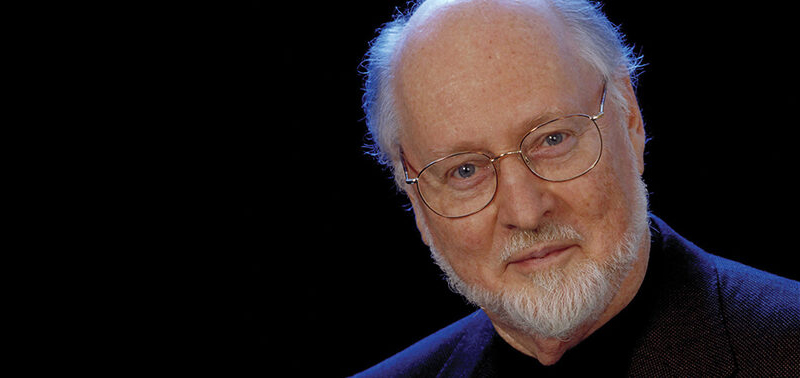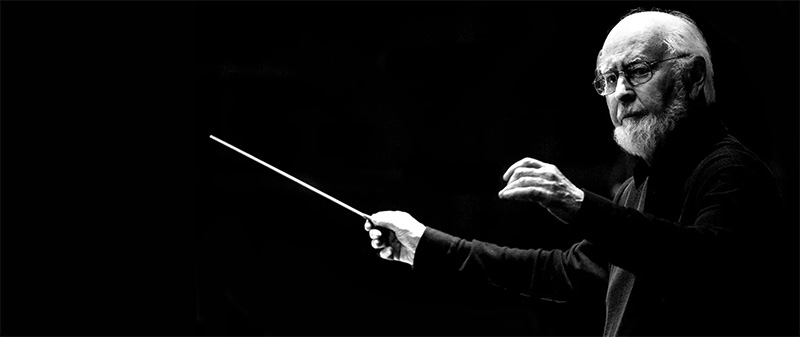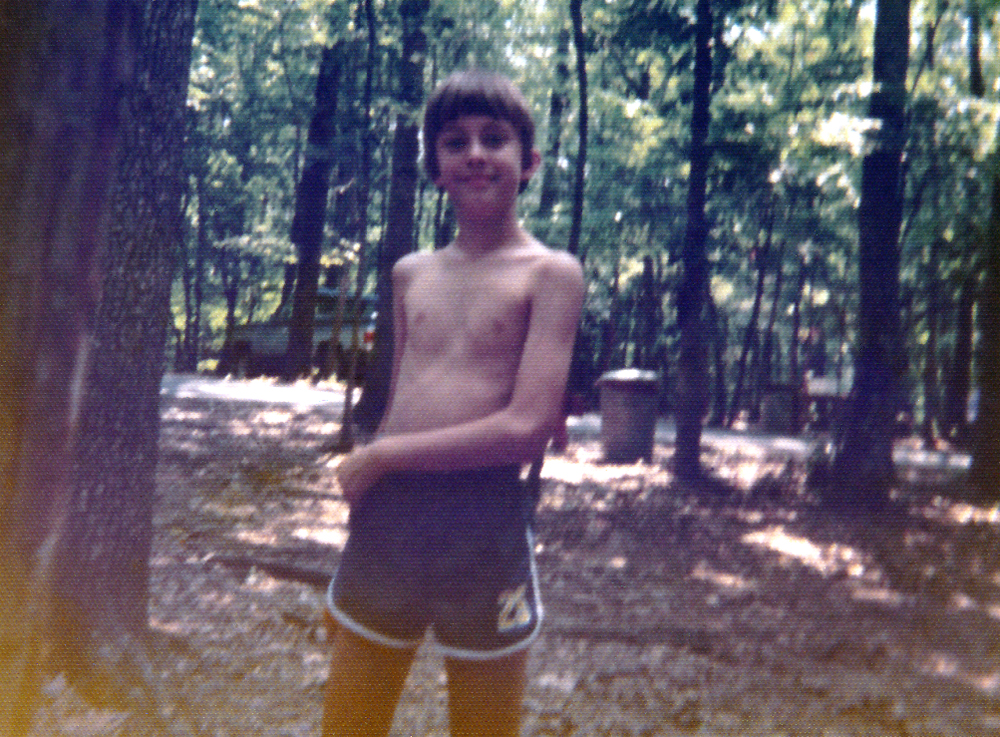Into A Larger World
Star Wars celebrated its forty-fifth anniversary this year. When it hit theaters in May of 1977, George Lucas' "little space movie" completely blew the minds of an entire generation. I was a nerdy eleven year old kid who already loved Godzilla, comic books, and Star Trek, so Star Wars was tailor-made to appeal to a kid like me.
Now, I'm not going to go off on a slobbering fanboy rant about the history of Star Wars, and how it changed the world, and all that. Over the years there's been enough physical and electronic ink spilled about the franchise to fill an entire library. I myself have a row of shelves filled with nothing but books about Star Wars.
No, this time around I'm going to defibrillate one of my favorite dead horses back to life, only to beat it savagely to death once again... namely, to discuss the "where does it come from?" mystery of creativity.
We're all born with the ability to be creative. I truly believe that's what we're put here to do: to make and share our gifts in ways that provoke emotional reactions from our fellow passengers on Spaceship Earth. Music, painting, dance, writing... Humans are capable of so much awesomeness. It's incredible the amount of creativity that's present all around us. Just walk into an book store or record store or comic book store, and you'll be greeted by thousands and thousands of works of creative passion, all there to be sampled and enjoyed.
I've got my own personal pantheon of "creative gods". Gifted geniuses like Freddie Mercury, who made incredible music that still brings a smile to my face. Or Howard Stern, who gave birth to a twisted "blended family" that has made me laugh for two and a half decades. Or Jack Kirby, who co-created Captain America, my favorite superhero, and produced some of the most amazing illustrated fiction in the world.
And then there's George Lucas, the man who brought forth into the world the galaxy-spanning saga of Star Wars. Lucas' imagination was working overtime back in the mid 1970s. He was sitting in a small upstairs office in his house in Marin County, filling multiple yellow legal pads with his handwritten scripts, churning through draft after draft of his science fantasy epic as the ideas just poured out of him.
As creative as Lucas was, however, he didn't make his groundbreaking movie alone. "It takes a village", as they say. Lucas may have dreamt up the concepts, but he assembled a team of insanely talented people to bring his ideas to three-dimensional life. Producer Gary Kurtz helped him focus his storytelling. John Dykstra and Dennis Muren filled a warehouse with craftsmen and pioneered the visual effects team that would become Industrial Light And Magic. Joe Johnston, later to become the director of The Rocketeer and Captain America: The First Avenger, designed spaceships and characters that have now become pop culture icons.
In my mind, however, Lucas' most important collaborator, the man who put that extra something into the movie, the artist who added the "X-factor" that took Star Wars from being an enjoyable sci-fi romp to a stone-cold cinematic classic, was award-winning genius composer...
...JOHN WILLIAMS.
Hot off his Oscar win for the score from Jaws, John Williams was recommended to Lucas by his friend Steven Spielberg. Initially Lucas wanted to use existing classical music as the soundtrack to Star Wars, but Williams convinced him that an original score in the style of the swashbuckling adventure movies of the 1940s was the way to go.
Luckily, Lucas eventually agreed. And boy howdy, did he make the right decision! I will never forget the moment I first heard that triumphant main theme. The 20th Century Fox fanfare ended, the "long time ago" card faded to black, there was this pregnant pause... and then...
DA-DAAAA! Those first brassy chords blasted out of the speakers. The day-glo "Star Wars" logo filled the screen before receding into an endless field of stars . The "story so far" blurb began crawling up the screen. And the next two hours just flew by.
Williams' score saturates the movie, filling it with mood and drive that perfectly complements the amazing images on the screen. For every propulsive cue that puts an exclamation point on the action, there's a soft and introspective piece which supports the quieter moments. The capture of Princess Leia, the escape from the Death Star, the introduction of Ben Kenobi, the battle of Yavin... every scene has an appropriate theme. There's even space-jazz for the extraterrestrial exoticness of the Mos Eisley cantina! At the end of the film, when the medal ceremony march finished, and the end credits were rolling, I was on my feet clapping along with the rest of the audience.
1977 found Williams in the early stages of an incredible run of musical creativity. Between 1975 and 1983, he wrote the scores for Jaws, The Towering Inferno, Star Wars, Close Encounters Of The Third Kind, Superman: The Movie, The Empire Strikes Back ("The Imperial March", the Darth Vader music, may be more popular than the actual Star Wars theme), Raiders Of The Lost Ark, E.T. The Extraterrestrial, and Return Of The Jedi.
Just look at that list! In less than a decade, John Williams composed and recorded some of the most memorable music in the history of film. You can hum just a few notes - "doo-DOO-doo-doo-DOOOO", or "DAH, dah-dah-DAH-dah, dah, dah, DAAAAH", or "dah-dah-DAH-daaaah, dah-dah-DAAAAH" - and even casual film fans will know the movie. (By the way, those examples were Close Encounters, Superman, and Raiders.) But in my mind, the crown jewel of Williams' body of work always be the score for Star Wars.
Like a blanket of artistic pixie dust, the supernova of imaginative energy emitted by Star Wars soaked deep into the very being of a geeky boy in the suburbs of North Carolina. (In case it's not clear, I'm talking about me.) Even before that fateful day in July 1977, I'd always been a creative kid. I drew my own comic books. I worked with modeling clay. Building action figures out of discarded multi-colored telephone wire was my jam. While the other kids were out riding their bikes around the neighborhood, I was digging through my box of Legos looking for the perfect part to finish off my robots.
But Star Wars put my inquisitive artistic nature into hyperdrive. For the first time in my life, I wasn't just passively enjoying pop culture, I was interested in the technical aspects of what brought it all to life. The names in the credits of my comic books and TV shows and movies took on a deeper meaning. What in the world was a "director of photography"? What did an "inker" do? What is a "teleplay"? And what the hell was a "best boy"? Wanting to know how Star Wars was put together opened my creative horizons. I was finally keenly aware that there were real people behind the fantasies I was enjoying. And I wanted desperately to be a part of the larger creative world where they lived.
All my burgeoning imaginative energy reached its fever peak in early fall of 1977, in my sixth grade homeroom at Millis Road Elementary School. During one of our weekly hours of art class, the art teacher, Mrs. Parlier, had introduced us to "potato printing". You cut a design into the end of a raw potato, dip it in paint, and use it to stamp out images. The end result is a piece of colorful graphic artwork, like a classic Saul Bass movie poster.
At this point in my life, I didn't know what "surrealism" was. I'd never seen a Salvador Dalí or Jackson Pollock painting. But I guess my mind made a connection with the off-kilter Muses that inspired them, because I went full-on abstract. While the other kids were making smiley faces and flowers, I cut all sorts of weird shapes into my spuds. Using the most vibrant tempera paints I could lay my hands on, I carved, dipped, pressed, and swiped to my heart's content. And the entire time I was working, I was humming the Star Wars music to myself. For an entire hour, I was off in my own creative galaxy far, far away.
The end result of my first plunge into the waters of unbridled creativity was a kaleidoscopic burst of hues and shapes that I triumphantly titled "Springtime On Jupiter". I'd never done anything like it before. It wasn't a superhero, it wasn't a robot, it wasn't a race car... it just was, a perfect expression of child-like creative impulses.
I was so happy with my creation, I enthusiastically presented it to my homeroom teacher, Mr. Patterson, as my entry for the school-wide art contest. I should have been aware that something was up when he didn't say anything like "That's great!", or "Wow, what a neat painting!" He just looked at it for a moment, said "Okay", and went back to his desk. In my eleven year old mind, that was that.
Weeks later, as the annual Millis Road Open House was in full swing, I dragged my parents past the refreshments, past the fundraising sale, and into my classroom, to proudly show off my creation. But, for some reason, it wasn't up on the wall! Every other kid in my class had their selected artwork on display, but mine... it was nowhere to be found.
I rudely interrupted Mr. Patterson, mid-parental chat, to ask him where my picture was. He threw a weak "I don't know" my way, before turning back to his conversation. Apparently, that was supposed to be the end of it.
That was not the end of it, though. I proceeded to turn the entire classroom upside down. I went through every cubbyhole. I looked in every desk. I pulled out every book on every shelf. I dug deep into every supply cabinet. Completely ignoring Mr. Patterson, all the parents, and all my fellow students, I went full-on Indiana Jones, excavating the entire room in a panicked hunt for my personal treasure.
All that intense detective work paid off, because I finally found it. This will sound like extreme exaggeration, but I swear this is true: "Springtime On Jupiter" was in the back of the classroom. Under the sink. Inside a cabinet. Shoved between two thick stacks of newsprint. The whole crazy scene was only a "Beware Of The Leopard" sign away from being a Douglas Adams bit.
But I didn't waste one single thought about how it wound up there. I was just deliriously happy to have found it! So happy, in fact, that I ran over to Mr. Patterson and barged in on yet another conversation... this time, one he was having with my very own mom and dad. I shoved the painting in his face, and exclaimed, "Mr. Patterson! I found it!" His eyes went wide behind his Coke-bottle glasses. He hemmed and hawed. "Great!" he eventually squeaked out. I ran over to the wall and hung my artwork with pride next to all the other pictures. I'd found my creation. Crisis averted.
In thinking about this episode over the years, I've come to the conclusion that Mr. Patterson didn't do what he did with any intended malice. I truly believe he purposefully hid "Springtime On Jupiter" thinking he was doing me a favor. It's my theory that, in the conservative suburban world in which we were living at the time, he was concerned what people would think and say about that scrawny helmet-haired kid and his crazy imagination.
I guess that's a nice gesture. I guess?... The last thing a sensitive kid like me needed was a lot of ridicule. (I am sooo glad I grew up in a world without social media...) But what he really did was suppress and censor my true nature. He made a judgment call and ruled against my goofy ideas and oddball imagination.
But worst of all, he took me out of the running for the art contest, which was won by... wait for it... a picture of a smiley face next to a flower.
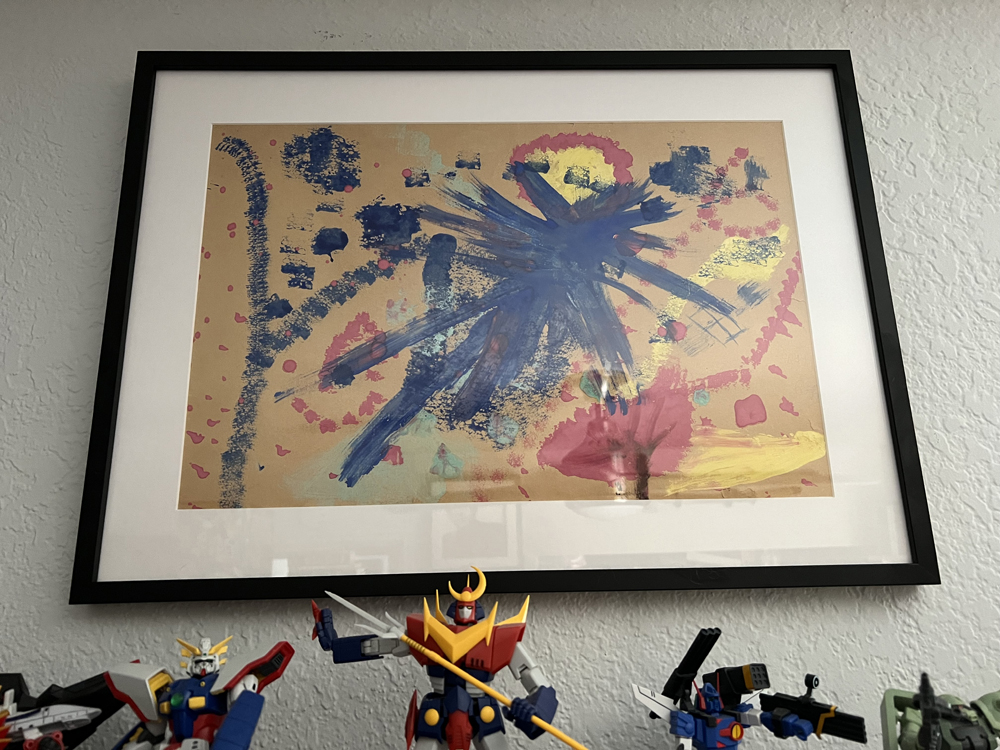 The painting that started it all. I have it hanging over my desk, to remind me never to doubt myself.
The painting that started it all. I have it hanging over my desk, to remind me never to doubt myself.
Of all the impacts Star Wars has made on my life, the near omnipresent status of John Williams' scores in my day-to-day escapades is probably the most important. When I'm in the middle of a deep writing session, I'll often cue up some of Williams' classic movie music to set the mood. If I'm banging together a big action piece, then it's Raiders to the rescue. If I need to give the hero their big moment, Superman helps me rise to the occasion. If I'm trying to create an air of mystery, Close Encounters brings the unsettling energy I need.
And Star Wars (all six of them... yes, I said six!) takes care of all the rest... dialog, quiet moments, scary scenes, and outright drama. Many of my writing sessions get a helpful boost from Williams' expansive body of work. I've even discovered that "The Imperial March" is the perfect soundtrack for dealing with tax forms.
While I'm toiling away at my craft, music filling my little room here in the back of the house, hanging over my desk is "Springtime On Jupiter", that singular piece of artwork I created when wasn't even yet in my teens. I placed it there so that every day I can take inspiration from the innocent kid I used to be, that wide-eyed chump who got his socks knocked off by Star Wars all those years ago. I do my best to embrace the fact that it's more important that I even make the attempt, than it is to strike gold.
Some of you may not know this, but when George Lucas brought his initial script for "The Star Wars" to Hollywood... nobody wanted it. Nobody! Every studio he went to, he got turned away. The executives didn't get what he was trying to do, and on top of that, they thought science-fiction was strictly for kids. But Lucas never stopped believing in the story he'd created. His perseverance paid off, because after months and months of doors being closed in his face, Alan Ladd at Fox decided he'd give it one more look. Fourteen months and $11 million later, the movie industry, and pop culture in general, were changed forever.
Even though he was already an established and successful filmmaker, Lucas experienced what me and every artist who are just starting their journey suffer through. Day after day after day, he had to go home burdened with the sting of rejection. Then one day he went out... and he got a "yes". He got that chance. And he made the most of it.
Wait a minute... am I comparing myself, and every other artistic type, to George-frigging-Lucas? Am I actually daring to put us on the same creative level?
Well... Yeah, I am. Who's to say what happened to Lucas won't happen to us "artistes"? Who's to say that our own Alan Ladd isn't going to receive one of our marketing emails? Or come across one of our unique creations when judging a contest? Or strike up a conversation with us in the ball pit at Chuck E. Cheese? (Okay, that last one might be specific to me alone.) Every day is awash in possibilities. There's no reason for any creator to give up, because there's no telling what could happen.
But why put myself through the torture of not knowing if my ship will ever come in, you may ask. Why spend hours locked away in my office with no human contact as I type my brains out? Why watch my savings dwindle away as I get turned down on a weekly basis? Why not just get a regular job and give up this crazy dream?
Good questions! The simple answer is that I'm doing it - being creative in some way every single day - because I realized late in life that it's in my nature to do so. I'm doing it because I finally grokked that I was born to live through my imagination. I'm doing it because I want to contribute to that larger world Star Wars introduced me to.
I'm doing it - and loving it - because it feels so right, of course.
(A different version of this article, edited by Brandon Marcus, was originally published on Trouble.City.)
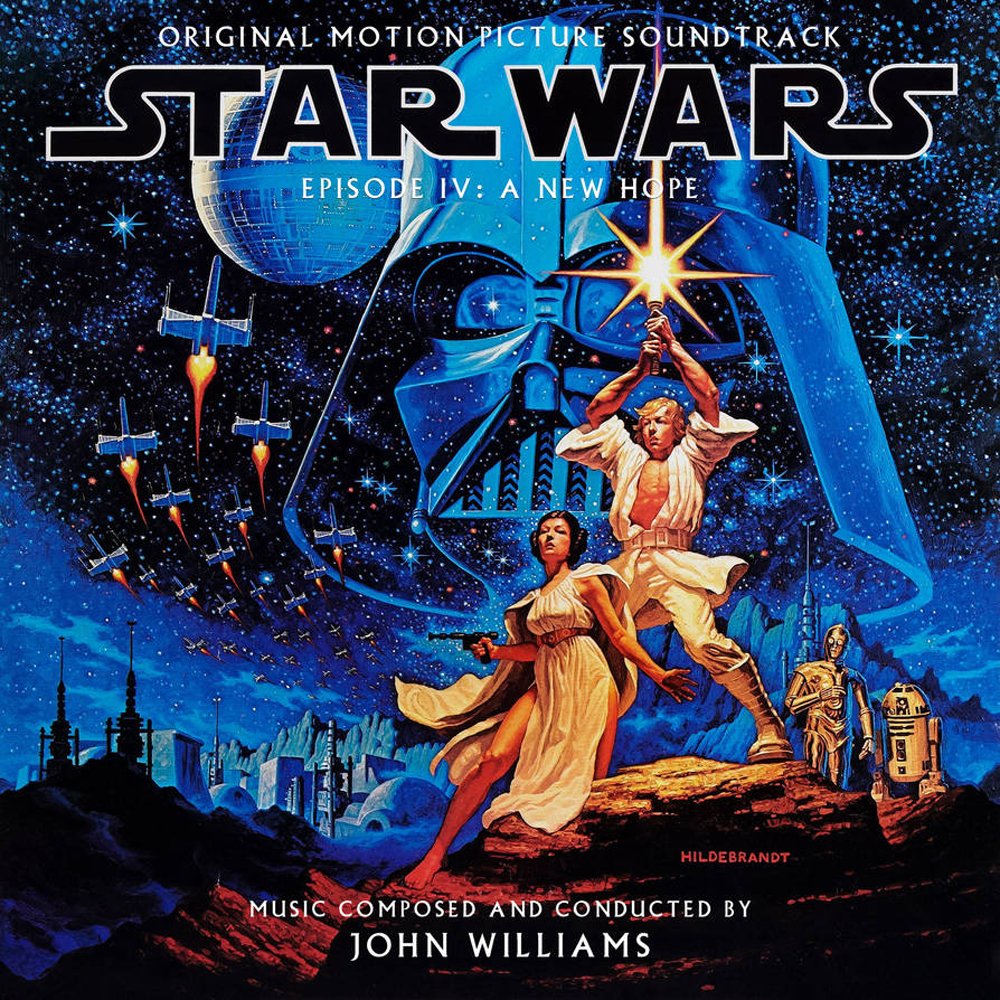 JOHN WILLIAMS
JOHN WILLIAMS